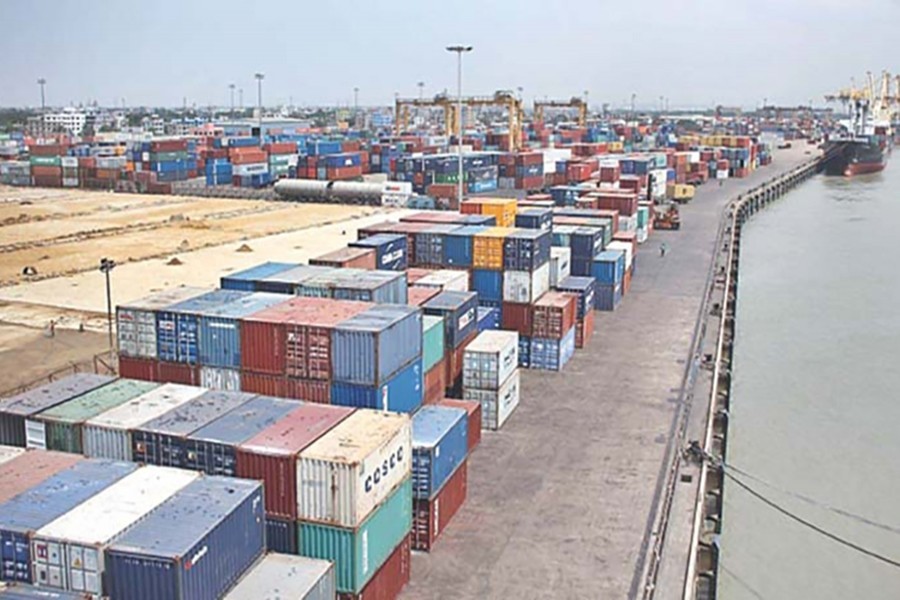Last week by virtue of an agreement between the Central Land Allocation Committee (CLAC) of Ministry of Land and the Chittagong Port Authority (CPA), 803 acres of land was allocated for the Bay Container Terminal on a small island off the Patenga coast. This is in addition to the 68 acres of land that had been given to the project earlier. Although the project proper would require years of more effort for completion, yet this important step of land allocation would be welcome by everybody concerned. Once completed the project will create provision for three cost-saving container terminals, where ships of bigger length and draft will be directly berthed to unload or load their merchandise directly without the help of lighter vessels. This would enhance the standing of the country's major port that handles over 90 per cent of the total export and import trade.
The Bay Container Terminal is of utmost importance to the commercial capital of Bangladesh. Although only three terminals will not be enough, they would be a useful step by any calculation. The seaport's location on the Karnaphuli River could be considered sufficient when it was formally declared as a `major port' about a hundred years back by the British. Even up to 1971, things could somehow be managed. However, when it became the commercial capital in an independent country, the whole scenario changed and new calculations emerged. Besides, after the emergence of container trade, regional importance of this Bangladeshi port has only increased. There have been addition of facilities now and then; and the newest would be six gantry cranes by the next month. However, the business cost of Bangladesh ports has been proverbial. Here the Chittagong Port Authority (CPA) is not alone to blame. All entities have their fair share of culpability. If release of goods takes two weeks in place of two days, fingers must be pointed to the whole assortment of people and bodies around. Even with its limitations, the port now stands at 71st in the world list and the second most important in the Bay of Bengal area. Emergence of organisations of regional cooperation like SAARC, BIMSTEC, BCI and increasing dependence of Bhutan and the North Eastern regions of India have presented the CPA with an onerous load of work and opportunity. These must be completed and seized.
From being `one of the finest in the Eastern world' in Ptolemy's time, and having hosted Arab traders from the 9th century, and then becoming Islamabad when the Moghuls joined it to Bengal proper, Chattogram was never bereft of fame and necessity, but it now stands at the threshold of its greatest test: turning to a very important hub of container trade for the region. This Bay Container Terminal should lead the way to Bangladesh's long-standing dream of having a deep-sea port. Looking from this angle, the latest step that the Ministry of Land and the CPA have just taken to arrange for the required land is welcome and portends to a bright future of activity. As project reaches fruition over the next few years and at a cost of billions of Taka, job creation and GDP growth will be augmented --issues that are paramount to the national economy.


